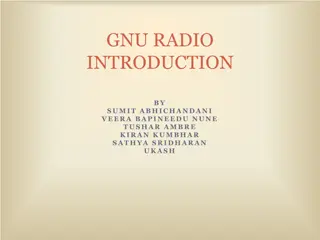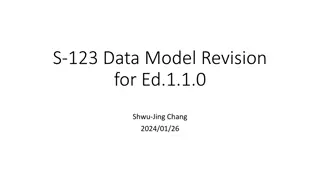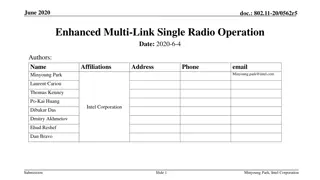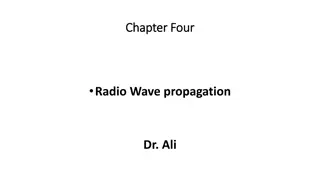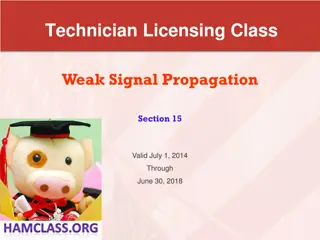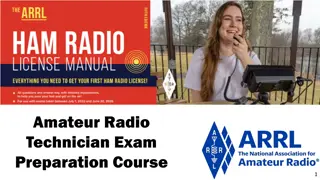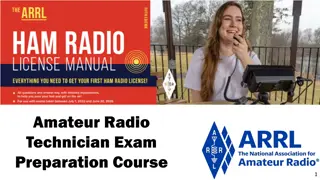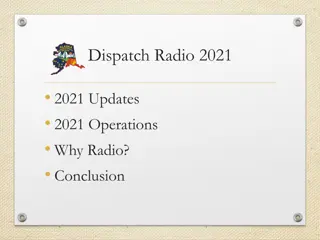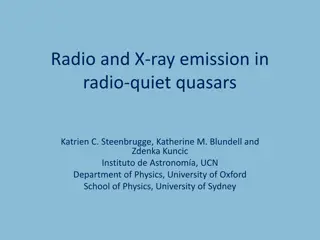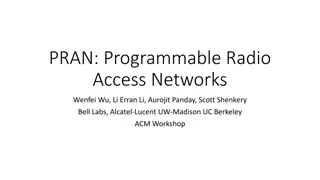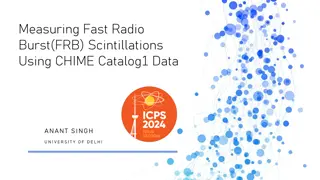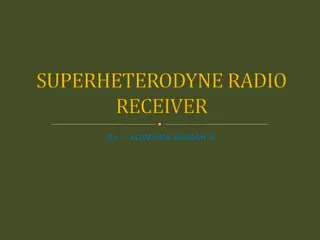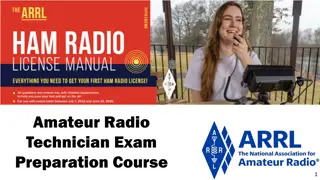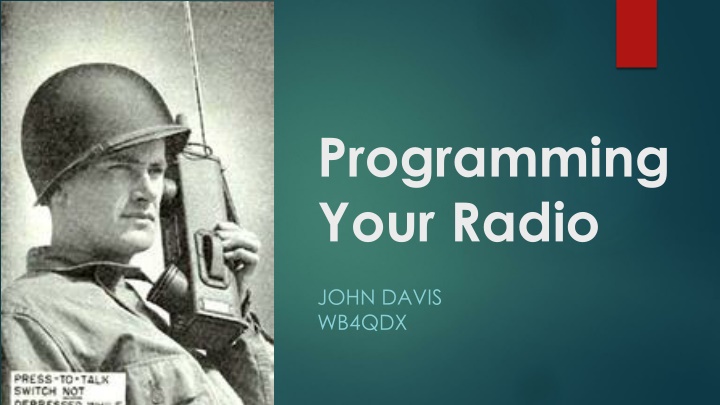
Radio Programming Decisions and Considerations
Explore important decisions for programming your radio, including front panel vs. programming software, mobile vs portable considerations, and basic programming for FM, D-STAR, and Fusion radios. Understand the key factors such as output frequency, duplex direction, offset, tone frequency, and more. Choose the right approach for efficient radio programming tailored to your needs.
Download Presentation

Please find below an Image/Link to download the presentation.
The content on the website is provided AS IS for your information and personal use only. It may not be sold, licensed, or shared on other websites without obtaining consent from the author. If you encounter any issues during the download, it is possible that the publisher has removed the file from their server.
You are allowed to download the files provided on this website for personal or commercial use, subject to the condition that they are used lawfully. All files are the property of their respective owners.
The content on the website is provided AS IS for your information and personal use only. It may not be sold, licensed, or shared on other websites without obtaining consent from the author.
E N D
Presentation Transcript
Programming Your Radio JOHN DAVIS WB4QDX
Decisions, Decisions Mobile or portable/HT? What type of radio am I programming (FM, D-STAR, Fusion, DMR, NXDN,P25)? Front panel programming versus programing software? How many memories do I need?
Mobile vs Portable Considerations How many memories do I need? Can I store and select different memory loads? How easy is it to change memories? How do I want to organize memories (banks, areas, bands)? Same memory order for portable and mobile
Front Panel vs Programming Software You should always know how to program directly on the radio for fast changes and quick additions in the field Initial setup is easiest with programming software Requires programming cable Software allows easy changes and additions Easy to save multiple versions Keeps backup copies Free and purchased programming software available
Basic Programming for FM What I need to know for programming Output frequency of repeater Duplex direction (+ or -) Offset (usually 600KHz for 2m/5 MHz for 70cm) Tone frequency (Hz) Tone on TX or tone squelch (TSQ)
Basic Programming for D- STAR What I need to know for programming Output frequency of repeater Duplex direction (+ or -) Offset (usually 600KHz for 2m/5 MHz for 70cm) Enter own callsign Turn on GPS Nearest Repeater OR Tone frequency (Hz) Tone on TX or tone squelch (TSQ) Plus My callsign Local repeater callsign Module (B for UHF, C for VHF)
Basic Programming for Fusion What I need to know for programming Output frequency of repeater Duplex direction (+ or -) Offset (usually 600KHz for 2m/5 MHz for 70cm) Tone frequency (Hz) for FM Tone on TX or tone squelch (TSQ) for FM Plus Change mode to DN or DW (digital narrow or wide) for C4FM digital mode
Basic Programming for DMR What I need to know for programming Output frequency of repeater Duplex direction (+ or -) Offset (usually 600KHz for 2m/5 MHz for 70cm) Tone frequency (Hz) Tone on TX or tone squelch (TSQ) Plus Color code Talkgroup number by repeater Create Zone
Programming Software Free software (still need programming cable) Chirp (available for most radios) Some manufacturers (usually for specific models) Purchased Software RT Systems reasonably priced allows easy copying from one radio to another Sells programming cables

